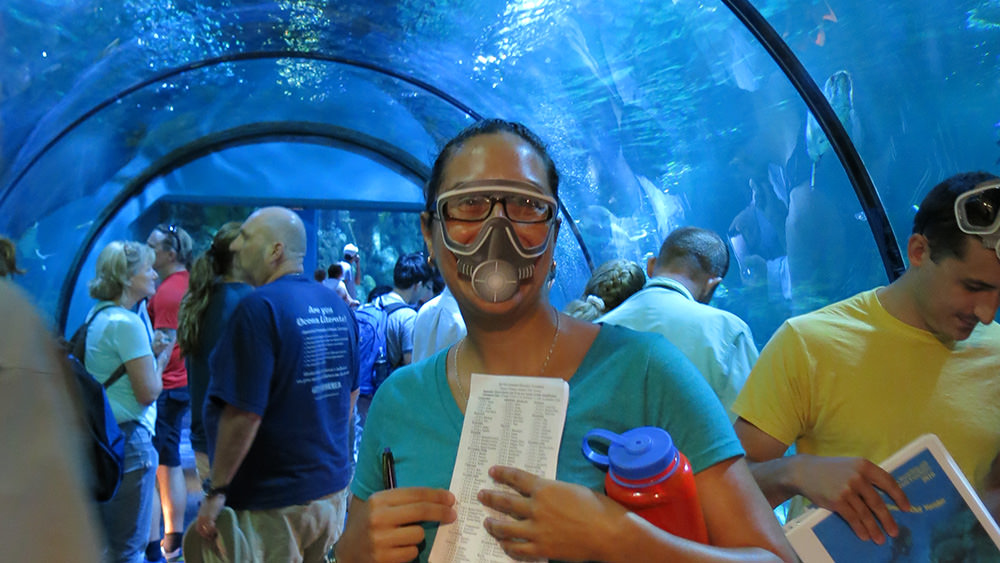
Bring ocean learning to life in your classroom through curriculum, lessons, activities, posters and more, all focused on Flower Garden Banks National Marine Sanctuary. From science and math to geography and art, we've got something for every age level.
Curriculum
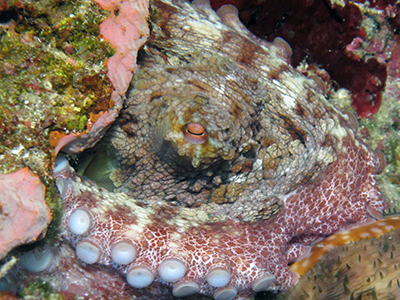
Octopus Adaptations
Grades 3-5
A 5E curriculum that takes elementary students through a variety of exploratory activities to learn about adaptations of the octopus. For video footage of an octopus on the reef, visit our Invertebrate Videos page.
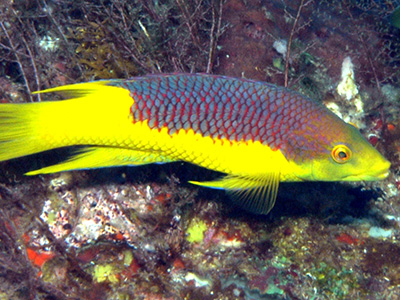
Fish Fun!
Grades 3-5
A 5E curriculum that teaches elementary students how three different fish species are adapted for different feeding styles. Includes images of Spanish Hogfish, Marbled Grouper and Goldentail Moray Eel.
For more images of fish from the sanctuary, please visit our Bony Fish Species page.
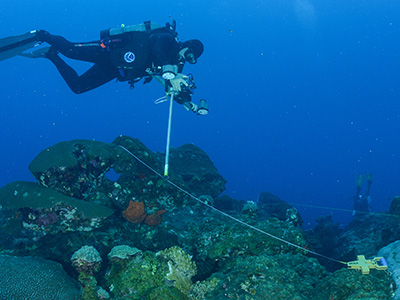
Reef Monitoring
Grades 6-12
A 5E curriculum that teaches students about the challenges of reef monitoring and tests their observation skills. Students examine actual reef monitoring images for changes over time in a reef habitat.
Stetson Bank Monitoring Images
Lessons
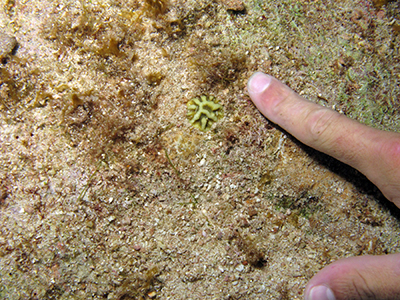
Coral Construction
Grades 4-8
Students model the beginnings of reef formation and the challenges of coral polyp settlement in Flower Garden Banks National Marine Sanctuary.
This lesson was developed in collaboration with Immersion Presents for the Secrets of the Gulf Expedition.
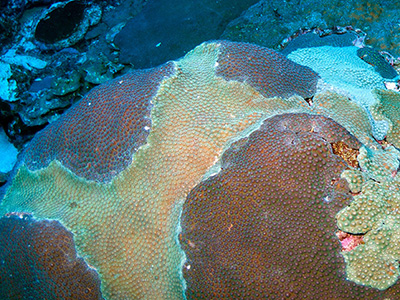
Coral Constructors
Grades 3-12
Students explore the diversity of coral shapes using Lego building bricks. A compiled Lego reef helps them discover the impacts of storm action on different colonies within the reef.
This lesson was originally developed by Shedd Aquarium and adapted with their permission.
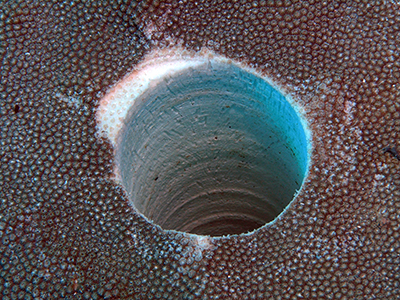
Coral Cores: Ocean Timelines
Grades 6-12
Students discover how corals create their calcium carbonate skeletons and what those layers of growth can tell us. Lesson Includes x-ray images of actual coral cores taken from the sanctuary.
For more information on this topic, please visit our Coral Cores page.
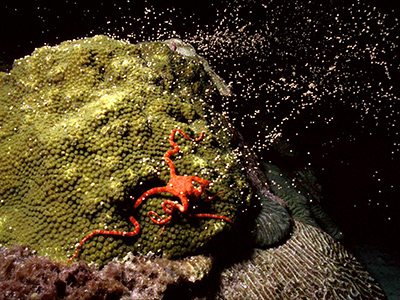
Coral Spawning Globe
Grades 5-8
Students learn about coral reproduction and model mass coral spawning on the reef by building a snow globe.
For more information on this topic, please visit our Coral Spawning page.
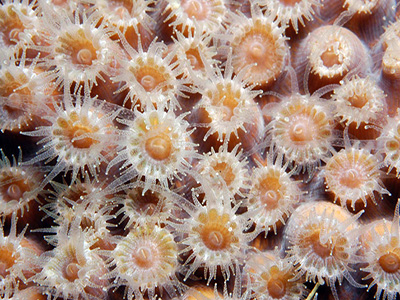
Coral Up Close
Grades 3-12
Students explore the anatomy of a coral polyp and how it fits into a colony by modeling coral polyps using their hands. Lesson includes a simulation of coral feeding techniques.
For more information on this topic, please visit our Coral Basics page.
This lesson was originally developed by Shedd Aquarium and adapted with their permission.
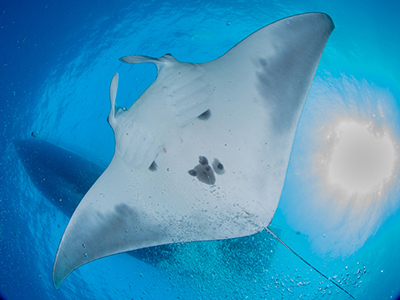
Manta Mysteries
Grades 4-8
Students explore the challenges of identifying and tracking manta rays through role playing activities.
For more information on this topic, please visit our Manta Catalog page.
This lesson was developed in collaboration with Immersion Presents for the Secrets of the Gulf Expedition.
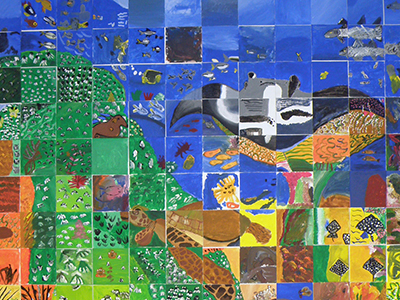
Paint a Reef Mural
Grades K-8
Students identify species of coral reef animals and their preferred habitat niches then share that knowledge by painting a mural.
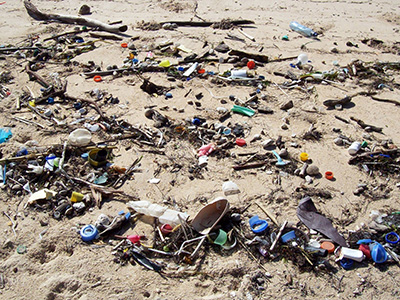
Plastics, Plastics Everywhere!
Grades 4-8
Students explore how plastics affect the ocean environment and the impact that they and their families have on the amount of plastic bags used each day, week and year.
For more information on this topic, please visit our What You Can Do page.
Activities
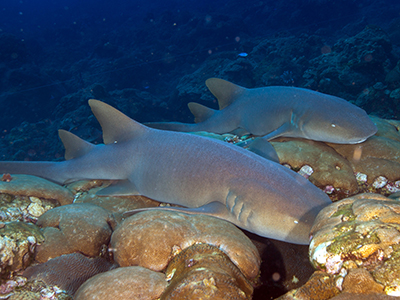
Coral Crossword Puzzle
Grades 5-12
Students review coral reef vocabulary and knowledge by answering 22 clues about Flower Garden Banks National Marine Sanctuary.
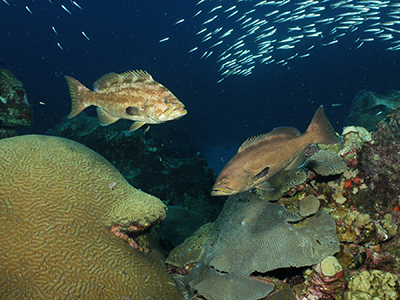
Coral Word Search
Grades 5-12
Students coral reef vocabulary by searching a letter grid for 32 words, from Algae to Zooxanthellae.
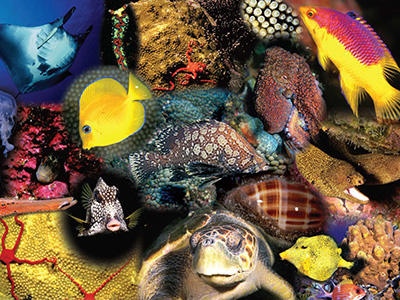
Critter Collage
Grades K-12
Students identify animals seen in the shallower parts of the sanctuary. Attached key provides a brief description of each animal.
To learn more about species in the sanctuary, please visit our Species List page.
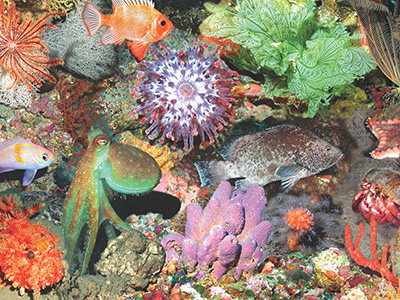
Critter Collage II
Grades K-12
Students identify animals seen in the deeper parts of the sanctuary. Attached key provides a brief description of each animal/plant.
To learn more about species in the sanctuary, please visit our Species List page.
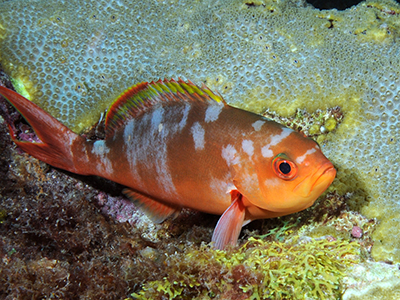
Day/Night Wheel
Grades K-2
Students construct a paper wheel that illustrates which animals are active on the reef during the day and which are active at night.
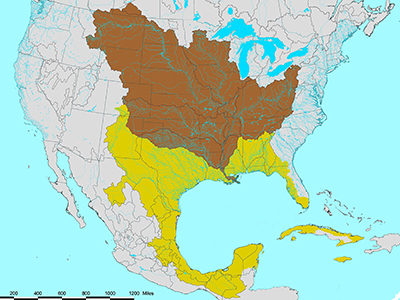
Gulf Watershed
Grades 4-6
Students identify and label the United States found within the Gulf watershed.
For more information on this topic, please visit our Natural Setting page.

Reef Scene Coloring Page
Grades K-12
Students color a manta ray, hammerhead sharks, a sea turtle and other popular animals of the sanctuary. How many animals can they find and identify?
To learn more about species in the sanctuary, please visit our Species List page.
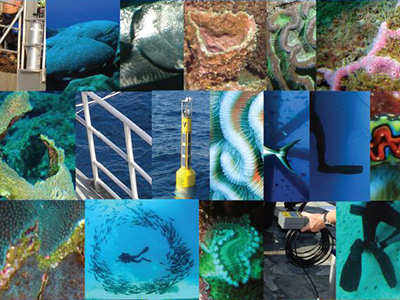
Sanctuary Alphabet
Grades 3-12
Students search for each alphabet letter shape, from A to Z, within a collage of images from the sanctuary.
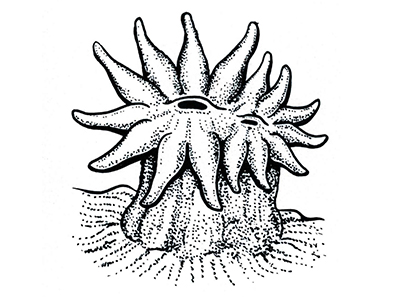
Splitting Polyp Coloring Page
Grades K-12
Students color a coral polyp that is splitting to become two polyps in the process of asexual reproduction.
For more information on this topic, please visit our Coral Spawning page.
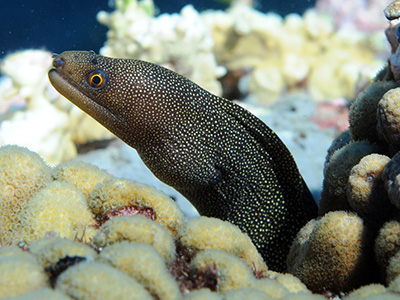
Zooxanthellae Words
Grades 6-12
Students create as many words as possible using only the letters from the word "Zooxanthellae."
For more information on this topic, please visit our Coral Basics page.
Webinar Recordings
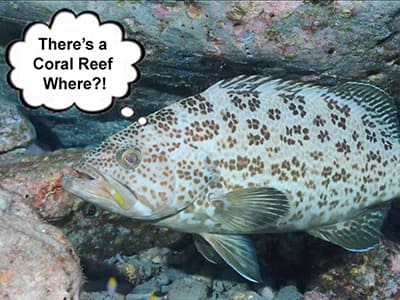
Flower Garden Banks NMS
Webinar recordings about the sanctuary, coral bleaching, coral spawning, ocean acidification, behind-the-scenes happenings, and more.
Don't miss all of the wildlife and spawning videos available on our Sanctuary Videos page.
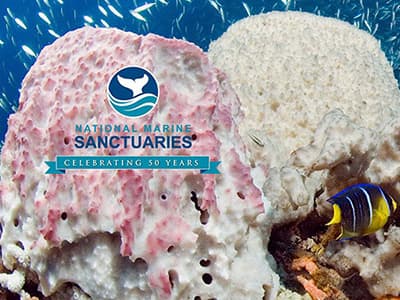
National Marine Sanctuaries
Upcoming and archived webinar recordings from across the National Marine Sanctuary System. Topics include habitats, marine life, ocean conservation, cultural heritage, and more.
Check back regularly to see what's coming next!.
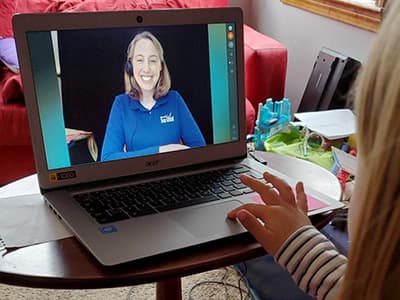
NOAA
A library of live and archived webinars, especially for educators and students. Themes include satellite monitoring, hurricane hunters, and deep-sea dives, and more.
Check back regularly to see what's coming next!.
Holiday Fun
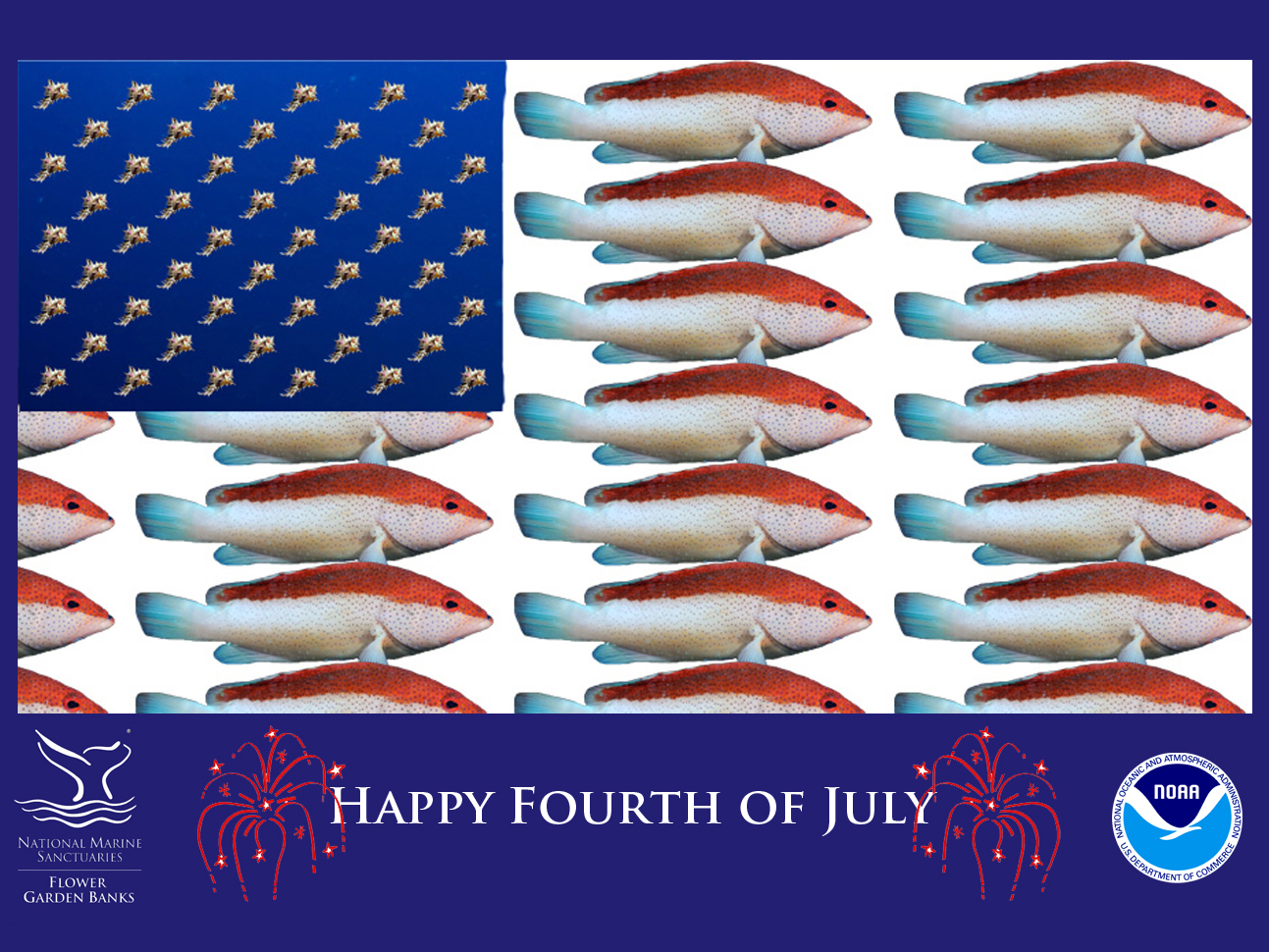
Fish of July
A sanctuary version of the U.S. flag made with images of coneys (grouper species) and murexes (sea snails) to help celebrate Independence Day.
To learn more about species in the sanctuary, please visit our Species List page.
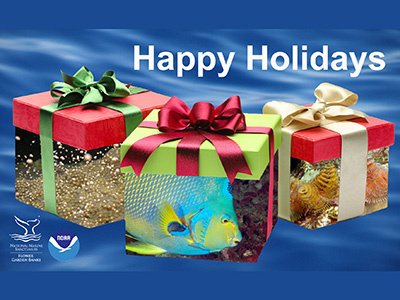
Gifts of the Season
A trio of colorful gifts highlighting the sanctuary's holiday specialties: snow (coral spawning), angels (angelfish) and Christmas trees (worms).
To learn more about species in the sanctuary, please visit our Species List page.
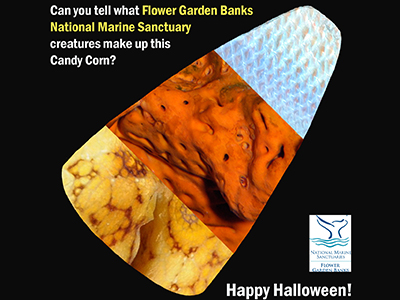
Halloween Treat
A fun piece for Halloween. See if you can identify the animal images that make up this Candy Corn treat. Need help? Clue 1, Clue 2, Clue 3.
To learn more about species in the sanctuary, please visit our Species List page.
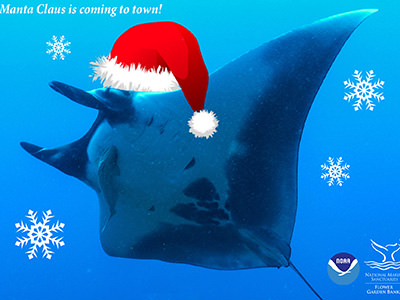
Manta Claus
You better watch out. You better not cry. You better not pout, I'm telling you why. Manta Claus is coming to town!
To learn more about species in the sanctuary, please visit our Species List page.
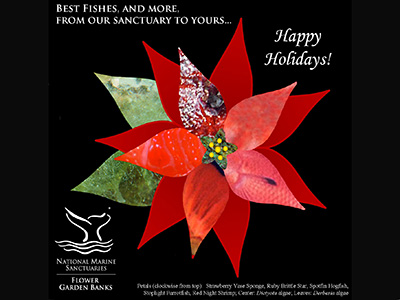
Poinsettia Power
A holiday greeting with a biological twist. The flower petals (bracts), leaves and center were created from images of sanctuary wildlife. A key is provided.
To learn more about species in the sanctuary, please visit our Species List page.
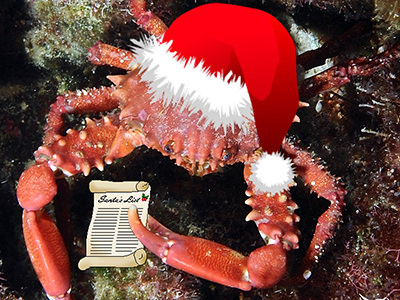
Santa Claws
A quick reminder that he's making a list. He's checking it twice. Gonna find out who's naughty or nice (to our reefs). Santa Claws is coming to town!
To learn more about species in the sanctuary, please visit our Species List page.
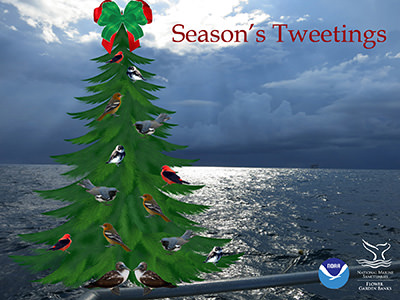
Seasons Tweetings
Believe it or not, there are more songbirds than seabirds in our sanctuary species list. These colorful tweeters migrate across the Gulf twice a year.
To learn more about species in the sanctuary, please visit our Species List page.
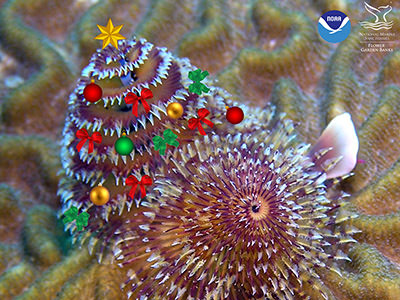
Worm Wishes
Oh,Christmas Tree! Oh, Christmas Tree! Who knew worms could be so beautiful? Worm wishes for a Happy Holiday Season!
To learn more about species in the sanctuary, please visit our Species List page.
Posters
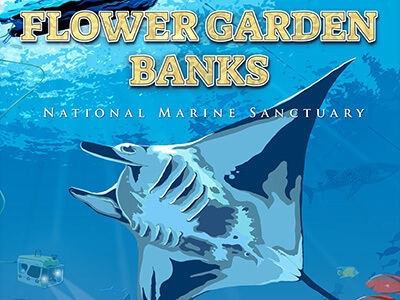
Save Spectacular Commemorative Poster
Original size: 18" x 27"
This is the 9th poster in the Office of National Marine Sanctuaries 50th Anniversary Save Spectacular poster series. It features graphic art of sanctuary habitats and marine life, along with scuba divers, an ROV, and the sanctuary's research vessel MANTA. A Manta Ray is featured front and center.
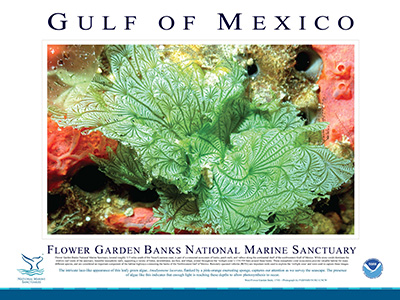
Deep Reef Algae Poster
Original size: 25" x 19"
This poster features a photo captured by ROV camera at 170 feet deep on West Flower Garden Bank. A description of FGBNMS is included underneath.
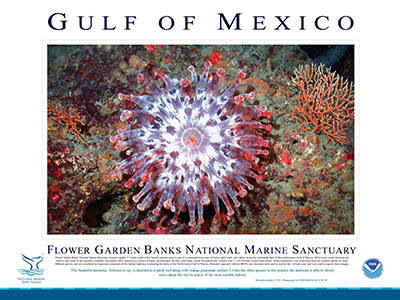
Deep Reef Anemone Poster
Original size: 25" x 19"
This poster features a photo captured by ROV camera at 373 feet deep on Horseshoe Bank. A description of FGBNMS is included underneath.
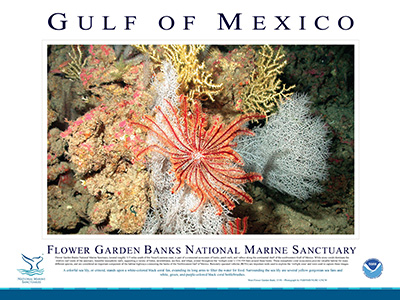
Deep Reef Crinoid Poster
Original size: 25" x 19"
This poster features a photo captured by ROV camera at 353 feet deep on West Flower Garden Bank. A description of FGBNMS is included underneath.
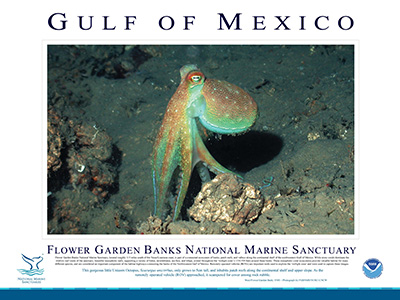
Deep Reef Octopus Poster
Original size: 25" x 19"
This poster features a photo captured by ROV camera at 358 feet deep on West Flower Garden Bank. A description of FGBNMS is included underneath.
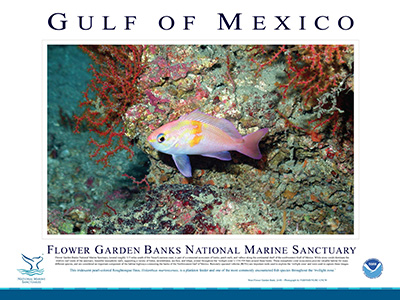
Deep Reef Roughtongue Bass Poster
Original size: 25" x 19"
This poster features a photo captured by ROV camera at 264 feet deep on West Flower Garden Bank. A description of FGBNMS is included underneath.
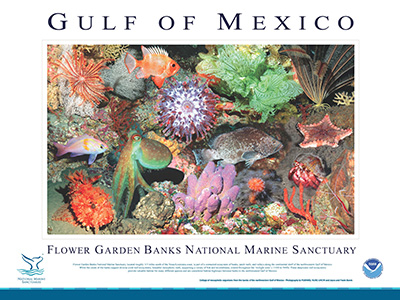
Deep Reef Collage Poster
Original size: 25" x 19"
This poster features a collage of photos captured by ROV camera in the deeper areas of the sanctuary and its surroundings. A description of FGBNMS is included underneath.
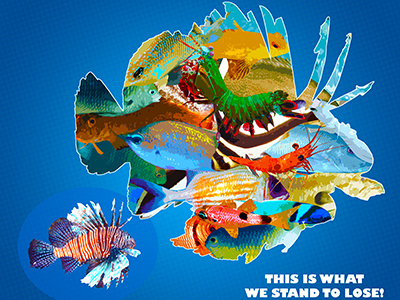
Stop the Invasion! Poster
Original size: 19" x 27"
A call to action on behalf of reef fish in the Gulf, this poster explains the invasive lionfish problem and encourages action. Pictured within the lionfish outline are images of species being eaten by lionfish in the sanctuary.
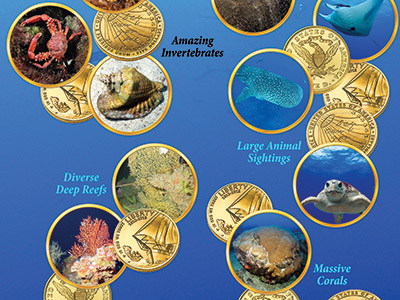
Treasures of the Flower Garden Banks Banner
Original Size: 31" x 82"
This elongated banner highlights some of the notable features of FGBNMS amid clusters of cascading gold coins, with a background reef image.
Other Resources
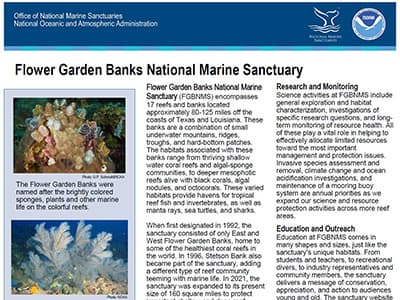
FGBNMS Fact Sheet
A full-color, 2-sided fact sheet that includes information about the sanctuary's location, habitats, flora and fauna, research and monitoring, and more. Perfect for science lessons, research projects, and even non-fiction reading practice.
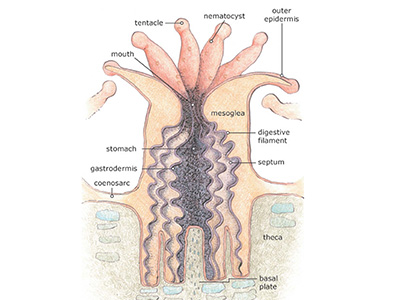
Anatomy of a Coral Polyp
A full-color illustration of coral polyp anatomy, adapted from the NOS Coral Discovery Kit to use when teaching about coral structure.
For more information on this topic, please visit our Coral Basics page.
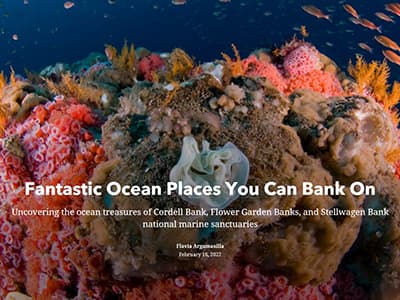
Sanctuary Banks Story Map
When most of us hear the word ‘bank’ we think of financial institutions and money, but banks in the ocean have a different value, concentrating a wealth of ocean species. Discover what makes these banks so special that we name sanctuaries after them.
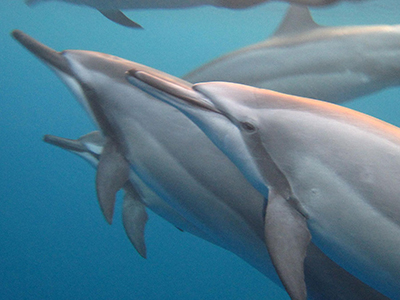
National Marine Sanctuaries
Learn about all of our National Marine Sanctuaries, from the Great Lakes to the Gulf, and from the Atlantic to the Pacific.
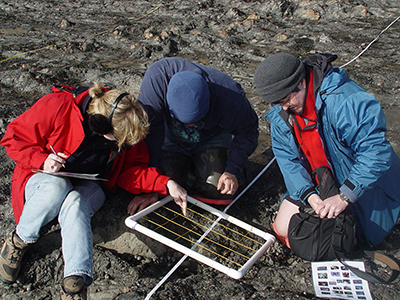
National Marine Sanctuaries For Teachers
Teacher resources and training opportunities as well as curriculum, lesson plans and activities from across the sanctuary system.
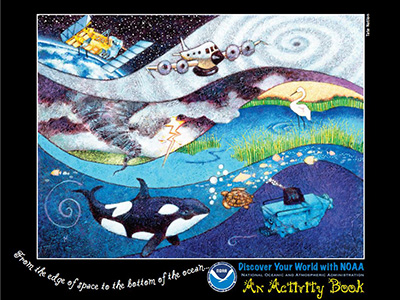
Discover Your World with NOAA
An activity book designed to show how NOAA helps us to explore, understand and protect our Earth. This book was developed for NOAA's Celebration of 200 years of Science, Service, and Stewardship.
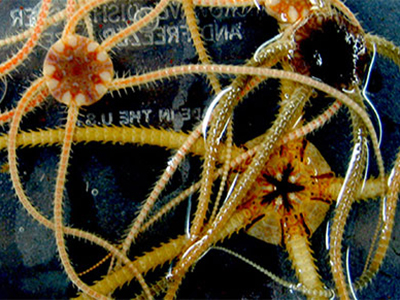
Ocean Explorer
Follow current expeditions, see images of the latest discoveries, read daily logs from scientists, download supporting curriculum and even Ask an Explorer questions via email.
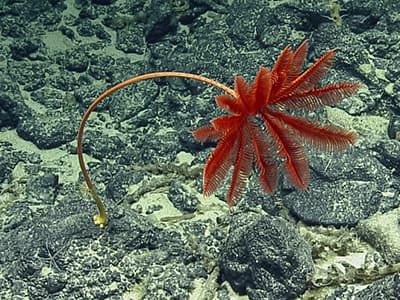
Deep Ocean Education
With resources for educators, students, and the public, the Deep Ocean Education Project website will help you harness the power of three leaders in ocean exploration: NOAA Ocean Exploration, Ocean Exploration Trust, and Schmidt Ocean Institute.
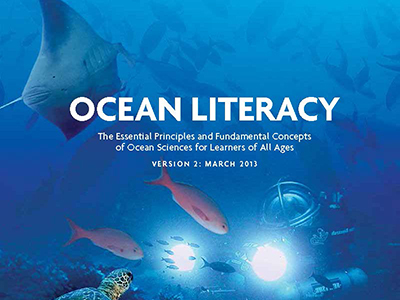
Ocean Literacy
A guide to incorporating ocean concepts into everyday teaching. There are 7 principles of Ocean Literacy — ideas scientists and educators agree everyone should understand about the ocean.
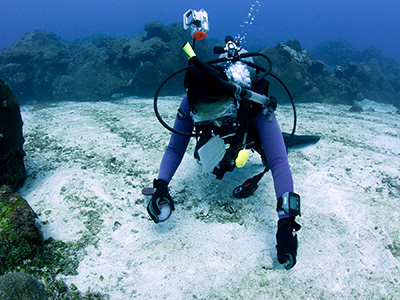
DWH Oil Spill
Information on how the sanctuary responded to the Deepwater Horizon (DWH) oil spill in 2010, as well as links to a variety of resources for teaching about oil spills.

MDBC Resources
The Mesophotic and Deep Benthic Communities (MDBC) restoration project, established after the DWH oil spill, has developed a variety of educational resources associated with deep coral and other benthic habitats.

